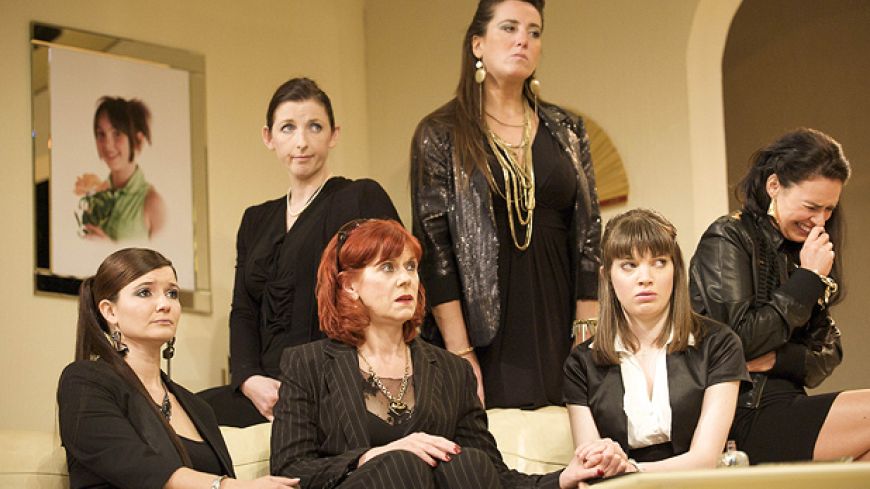
It is a brave thing to transpose a classic play out of its time and update it to a contemporary setting. Rona Munro did not take on the task lightly when she tackled Lorca’s The House of Bernarda Alba which was originally written in and set in 1930’s Spain. In her note in the programme, she writes of “…giving the play back its transgressive power.”
The original story is about a recently bereaved and highly controlling mother of five daughters, one of whom, the plainest, is from her first marriage.
This widow, Bernarda Alba (Siobhan Redmond), insists on enforcing extended mourning on her already isolated girls. Tensions are high in such a pressured atmosphere and when a marriage is arranged sexual jealousy becomes part of the mix, the climax is both shocking and inevitable.
Munro has transposed this tale, which in Lorca’s words is about “women in the villages of Spain”, to a Glasgow gangland family where violence and control are part of every day survival.
The opening set is like an advert for one of these sofa warehouses – all pale leather, pale carpet, corner units and nothing out of place. Very nouveau riche. Along with the six female portraits, there is a Spanish fan on a wall, a nod to their ill-gotten villa in Spain but also to the play’s roots.
There are lots of references to fiddling the social in spite of their trappings of wealth, setting the tone for their edgy, dangerous life. They refer to living in the ‘scheme’ a lot, which either means they still use the language of their class or that they have physically stayed close to their roots despite their wealth. They do live ‘above the shop’ i.e. the El Paso club whose neon light crackles on and off throughout the performance.
Two of the characters, Adie and Marty sound more Bearsden than Barmulloch, so maybe Mr and Mrs. Alba splashed out on a private education on these two. Bernarda Alba belies the myth of the cosseted gangster’s wife, seemingly ignorant of her lavish lifestyle’s source, as she steps easily into her dead husband’s shoes and emasculates the house by immediately and unsentimentally ordering the clearing out of his things.
The daughters live in the cabin fever atmosphere of a strange celibate bordello or a highly sexed convent. While it is hard to believe that modern women would obey such extreme restrictions, the utter controlling nature of this fierce matriarch, along with a baseball bat, make it convincing. The enforced mourning in the original play was symbolically broken by the youngest daughter wearing green, and this is repeated in Munro’s version. Ultimately, it is outward appearance that matters to Bernarda as she forces the black of mourning on her girls and plays to the paparazzi.
Lorca was killed by Fascists before his play was ever performed for having leftist views and for being homosexual. It can be no accident in the text that the El Paso club is the venue for a gay wedding that ends up in serious gay bashing. Throughout the play, the character, Penny( Myra McFadyen), an old school friend of Bernarda and now club employee, acts as a narrator through her dialogue. She is both convincing and comic. She has her cowboy boots firmly planted on the ground but it is Bernarda’s mother, Mary (Una McLean), also locked away in her demented goonie, who expresses truth when she reverts to her childhood of open doors, of Mammy and Daddy, of laughter, sun and kisses as she symbolically releases her briefly captured doo. This 12 strong all female cast shows survival techniques in its many forms.
Times:
Tue 3 – Sat 7 November 7.30pm
Wed & Sat 2.30pm
Read Lindsay Corr's review of The House of Bernarda Alba

